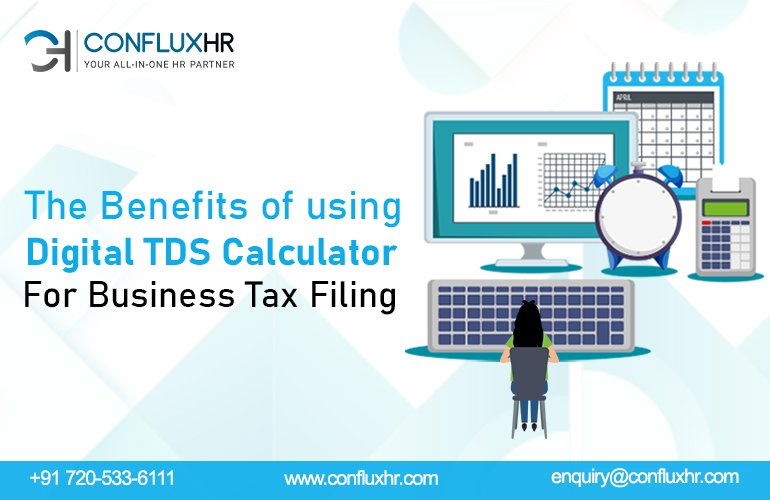Every business operating in India must deduct taxes at source and deposit them with the government, known as TDS (Tax Deducted at Source). Accurate and timely tax filing is crucial for businesses to comply with tax laws and regulations, avoid penalties, and maintain a good reputation. However, manual calculations and errors can lead to inaccurate tax filing and missed deadlines. In this blog, we’ll explore how using a digital TDS calculator can streamline the tax filing process for businesses and reduce manual errors.
Traditional vs. Digital TDS Calculators:
Traditional TDS calculators rely on manual data entry and calculations, making them prone to errors. These errors can have significant consequences for businesses, leading to incorrect tax deductions and penalties for late or inaccurate tax filing. Digital TDS calculators, on the other hand, offer increased accuracy and efficiency by auto-populating data and real-time tax calculations. They can also integrate with other tax filing systems, making tracking tax deductions, and filing deadlines easier.
Features of Digital TDS Calculators:
Digital TDS calculators come equipped with several features that benefit businesses. These features include auto-population of data, which reduces the time and effort required for manual data entry. Real-time tax calculations ensure that tax deductions are accurate, and businesses can file their taxes on time. Integration with other tax filing systems simplifies the process and ensures compliance with tax laws and regulations.
Benefits of Using Digital TDS Calculators:
Using a digital TDS calculator can benefit businesses in several ways. One of the most significant benefits is reducing the time and effort required for tax filing. Businesses can focus on other critical areas of their operations by automating data entry and tax calculations. Digital TDS calculators also reduce the risk of errors, which can lead to penalties and other consequences. Furthermore, they ensure compliance with tax laws and regulations, reducing the risk of legal disputes.
Case Study
A business that successfully implemented a digital TDS calculator is XYZ Company. The company struggled with manual data entry and tax calculations, leading to missed deadlines and penalties. After implementing a digital TDS calculator, the company was able to streamline its tax filing process and reduce the risk of errors. The calculator’s auto-population of data and real-time tax calculations ensured that tax deductions were accurate, and the company could file its taxes on time. Integration with other tax filing systems also simplified the process, saving the company time and effort.
Conclusion
Using a digital TDS calculator can benefit businesses by reducing the time and effort required for tax filing, increasing accuracy, and ensuring compliance with tax laws and regulations. Traditional TDS calculators are prone to errors, leading to missed deadlines and penalties. On the other hand, digital TDS calculators offer features that streamline the tax filing process, making it easier for businesses to comply with tax laws and regulations. By implementing a digital TDS calculator, businesses can focus on other critical areas of their operations while ensuring accurate and timely tax filing.


